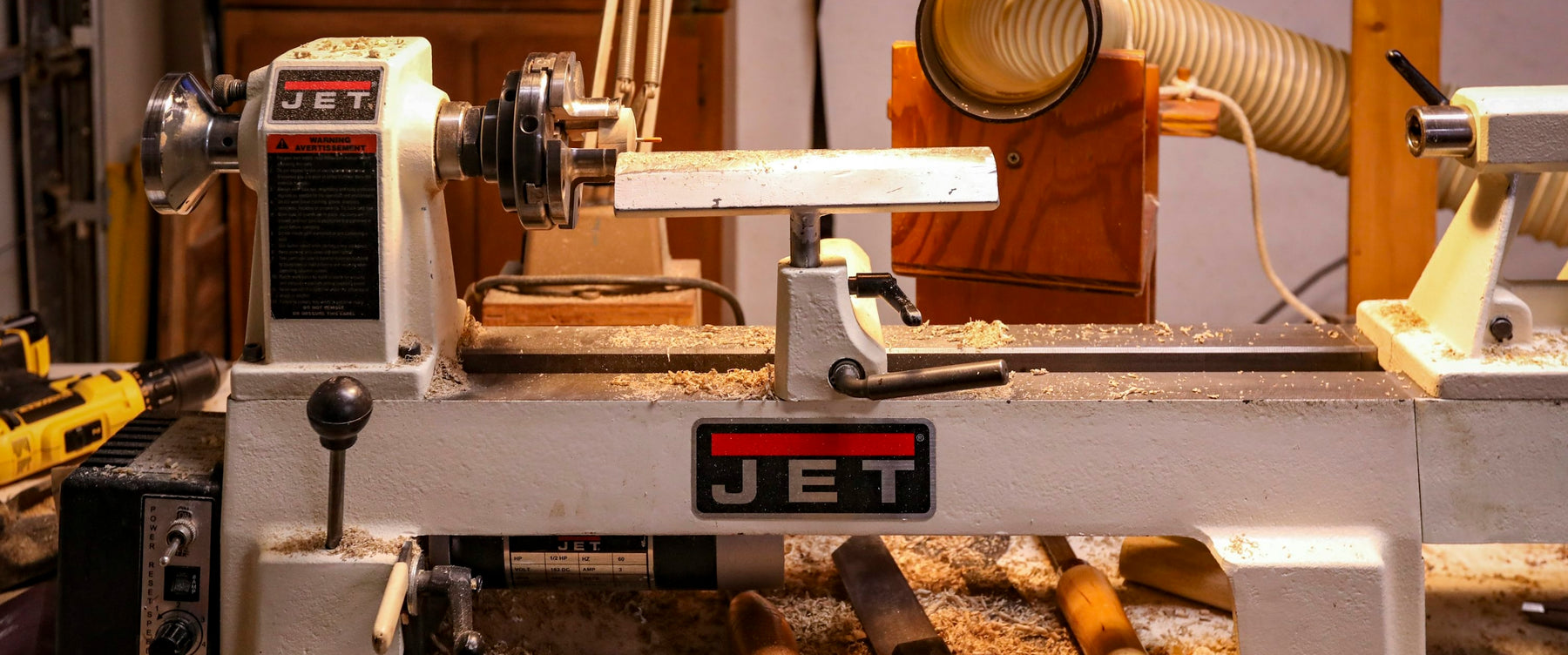1-203-200-0302
sales@apextoolworks.com
Mon-Sat 9AM - 6PM EST

The Science Behind High-Performance Woodworking Lathes
Woodworking lathes are the heart of any woodworker’s shop, allowing for the creation of stunning, functional, and decorative pieces. Whether you’re crafting table legs, bowls, or intricate designs, choosing the right lathe and understanding its operation are key to achieving professional results. This guide explores lathe fundamentals, selection criteria, and maintenance tips.
What is a Woodworking Lathe?
A woodworking lathe rotates a piece of wood while the user shapes it with tools. The process, known as turning, enables artisans to create cylindrical and rounded objects. Modern lathes feature variable speed controls, digital displays, and advanced clamping mechanisms, making them accessible for both beginners and professionals.
The main components include the headstock, which houses the motor and spindle; the tailstock, which provides support for longer pieces; and the tool rest, which stabilizes tools during cutting. The bed serves as the foundation, ensuring durability and precision.
How to Choose the Right Lathe
Selecting the right lathe depends on your project type, skill level, and budget. Here’s a rough breakdown of common lathe types, their applications, and pricing:
| Type | Application | Key Features | Price Range |
|
Mini Lathes |
Hobbyists, small projects |
Compact size, motor size around 1/3 to 1/2 HP, 10”-12” swing, weight capacity ~50 lbs |
$300–$700 |
|
Midi-size Lathes |
Intermediate, medium-sized projects |
Motor size ~3/4 HP, 12”-14” swing, weight capacity ~100 lbs |
$700–$1,500 |
|
Full-Size Lathes |
Professional shops, large projects |
Motor size 1–2 HP, 16”–24” swing, weight capacity ~300 lbs |
$1,500–$5,000 |
|
CNC Wood Lathes |
Advanced users, precision work |
Motor size 1–2 HP, customizable swing sizes, weight capacity ~500 lbs |
$5,000–$20,000 |
Mini lathes are perfect for small projects like pens or ornaments. Midi lathes handle slightly larger tasks, such as table legs or medium-sized bowls. Full-size lathes are designed for professional shops managing large-scale projects, while CNC wood lathes provide automation for intricate designs with unparalleled accuracy. However, they also require 220V–440V, 3-phase electrical supply, unlike smaller lathes.
The swing of a lathe refers to the maximum diameter of the workpiece that can be turned on the lathe. It is essentially twice the distance from the center of the spindle (the axis of rotation) to the bed (the flat surface or base of the lathe).
For example, if a lathe has a swing of 12 inches, it means you can turn a workpiece with a maximum diameter of 12 inches. The swing provides a critical measurement when selecting a lathe, as it determines the size of projects you can work on.
Why Is Swing Important?
- Determines Project Size: Larger swing values allow for turning bigger pieces, such as wide bowls or furniture parts.
- Workshop Suitability: Smaller lathes with lower swing values are more compact and suited for small workshops.
- Machine Capability: Understanding swing ensures you don’t select a lathe that’s too small for your needs or too large for your space.
When buying a lathe, consider the swing in relation to the type of projects you plan to undertake. A smaller swing is adequate for pens or ornaments, but larger swings are necessary for bowls, spindles, or furniture legs.
Turning Techniques for Precision Craftsmanship
Woodturning is both an art and a skill. Spindle turning, often used for chair legs, requires steady hands and sharp tools. Bowl turning, on the other hand, involves specialized gouges to create smooth, rounded shapes. Mastery of feed rates, tool angles, and speed adjustments ensures a professional finish.
Understanding tool types is equally important. Skew chisels, scrapers, and parting tools each have unique purposes, and knowing when to use them can significantly enhance your results.
Caring for Your Wood Lathe
Maintenance is essential for extending the lifespan and performance of your lathe. Regularly clean sawdust and resin buildup to prevent overheating. Lubricate moving parts to reduce wear, and periodically inspect components for alignment and damage.
Upgrades like four-jaw chucks or advanced tool rests can further enhance your lathe’s capabilities. These accessories improve precision and make handling irregularly shaped pieces easier.
Key Differences Between Woodworking and Metalworking Lathes
When deciding between a woodworking and a metalworking lathe, it’s important to understand their fundamental differences. A metal lathe can be used to shapea variety of materials like metal or wood, but a wood lathe should only be used on softer materials. While they share a common purpose—shaping and crafting—they differ significantly in precision, power, and functionality. Below is a quick summary to help you distinguish between the two and choose the right lathe for your needs.
• Material Compatibility: Woodworking lathes handle wood and soft plastics; metalworking lathes machine hard materials like steel and aluminum.
• Precision: Metalworking lathes offer higher precision with tolerances in microns; woodworking lathes rely on manual skill.
• Tools: Wood lathes use handheld chisels and gouges; metal lathes use fixed cutting tools mounted on a tool post.
• Speed Range: Wood lathes operate at higher speeds (500–4,000 RPM); metal lathes are optimized for lower speeds (50–2,000 RPM).
• Power: Metal lathes require more powerful motors (1–10+ HP); wood lathes typically use smaller motors (1/3–2 HP).
• Automation: CNC options are standard for metal lathes but rare for woodworking lathes.
• Price Range: Metalworking lathes are generally more expensive due to their precision and automation features.
